Limelight
THE LIMELIGHT SERIES
From 2019, each month BIP will start interviewing all the collaborators that were nominated for “Limelight”, thus highlighting the merit of all that are selected by the Coordination of the Centres or Service Managers for being in the “Limelight” in the previous month. Congratulations to the nominees!
Speaking with Artur Capela (CSIG), João Teixeira (CTM) and Sílvia Bessa (CTM)
- Artur Capela, CSIG

You began working at INESC TEC in 2007. How has this journey been so far?
At first, I didn’t knew what to expect. In 2007, I was finishing my degree in Informatics and Computing Engineering at FEUP. Around the time when students had to start looking for internships and theses, I came across INESC TEC, which had a project related to music. Being a musician myself, it instantly stood out to me and this is how I had my first contact with the institute. The project was with Professor Jaime Cardoso at the former UTM (now CTM).
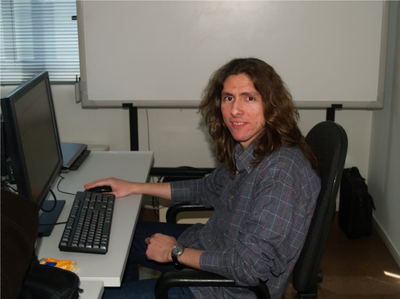
At the end of 2009, I applied to a research grant at the former USIG (now CSIG) to the project MOBILES, with José Correia, which was given to me. I stayed at CSIG ever since and I have been working in several different projects. Some of them are more geared towards research while others are related to service provision and consultancy. These projects deal with different types of clients, environments and intricacies and as such, the challenges have been constant and ever growing. While gaining more experience and responsibility due to the work developed throughout this time, in 2017 there was a chance to change the contractual relationship, making me an R&D employee.
How would you describe your work at CSIG/INESC TEC?
If I had to summarise it in a sentence, I had to say it is a diverse, multitasked job which is often redesigned due to circumstances that occur throughout the day. It is always changing and we are always learning, and “time” is like the wind: It rarely is on our side.
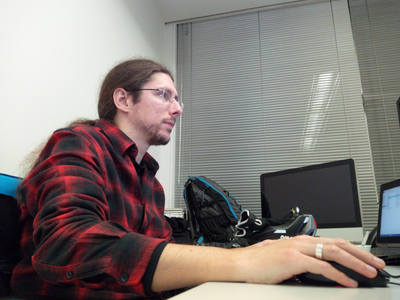
Most of the times, my job is related to the software development (desktop, web, mobile, databases), encompassing all the stages and the interaction with the client, in the case of a service provision, or with the partners of the project. In contrast, there is a lot of work that is done in the maintenance of systems in the production environment, simultaneously with new developments. This requires work in terms of server management, planning, internal meetings as well as with clients and partners of the project, technical coordination of teams and support to their elements. In addition, my involvement in the elaboration of service provision proposals and applications to new projects is needed.
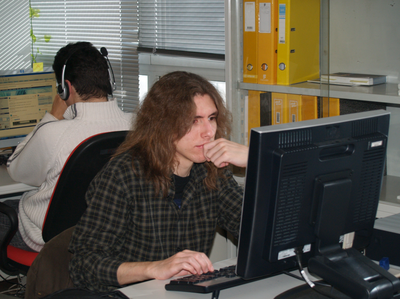
The combination of several different projects, with several types of clients or result expectations, as well as goals to achieve in each project, along with the different tasks, made my work at this unit and at INESC TEC as a whole a constant challenge.
We will end this interview by asking you to comment on your nomination by the CSIG Coordination:
“During the month of January 2019, Artur Capela was involved in four R&DT projects - INTEGRID, EYEFRY, ARQNET, IMOPortal -, in a quite complex context. In fact, besides the variety of projects, the technological differences and the difficulties inherent to each one of them that are worsened when it comes to the provision of services, it was also necessary to minimise the impact resulting from the departure of two members from the CSIG team (Marlon Freire in December, and Samuel Carvalho in January), who were involved in two of these projects. Despite all these factors, which were felt in a particularly negative way in January, Artur Capela demonstrated a great ability to carry out the work, and it was possible to fulfil, within the deadlines, all the commitments that had been previously agreed with the (internal and external) partners of these four service provision projects".
My first reaction was to be surprised. On the other hand, I’ve shown a rising effort and for countless times I’ve been wearing the institute’s flag, having the notion of the responsibility that I have on the several projects and tasks that are assigned to me. January was particularly complex. But besides all the obstacles, all our goals are being achieved due to the tremendous effort on our part to make it possible. Seeing my work being recognised is very rewarding and encouraging. However, I must also thank José Correia, the person that I’ve been working with the most over time, for his increasing confidence in me which had an important impact both on my evolution on this institute and on my skills.
- João Teixeira e Sílvia Bessa, CTM
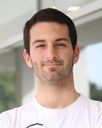

How did INESC TEC came up on your career path?
[João] Interestingly, my first contact with INESC TEC was through the thirty years celebration activities, in which me and my wife (a researcher at INESC TEC at the time) participated in the Social Challenge and took third place. At the time, despite not being officially an INESC TEC collaborator, I’d already begun my PhD and had debated the topic with my former Master’s professor and current supervisor of my PhD - Hélder Oliveira. With him, I found a topic of interest and the flexibility to execute it the way I intended to. The topic was part of a research line of the Breast Cancer Research Group. Subsequently, this topic gave rise to the development of this line in a national project (Norte2020-BCCT.Plan). In 2018, my dissertation allowed me to be assigned a PhD grant from FCT, so I’m currently continuing the project.
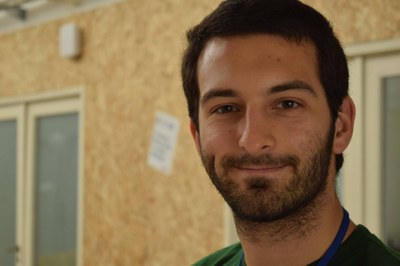
[Sílvia] The emergence of INESC TEC in my professional life is directly related to the fact that I’ve met Hélder Oliveira at a scientific conference (IbPRIA 2013). At the time, I was in a different research institution. After the conference, Hélder told me about a position in breast cancer research that was going to be open in its research group (VCMI). I applied and I was selected. Then, I developed my work under the supervision of Jaime Cardoso at FEUP. Although not being officially at INESC TEC, that allowed me to become better acquainted with the research group and their scientific contributions. When the project ended, Hélder invited me to write the Master’s thesis under his supervision. We confirmed that our dynamics, mutual respect and scientific interests were favourable for this professional relationship. Together, we defined an area of interest in order to attend a PhD and I submitted my application to FCT, also having Jaime as my co-supervisor. In the meantime, the BCCT.plan project was accepted and I started to collaborate in it. The application to the FCT’s grant was approved and I’m currently developing my work plan for the PhD.
One of the reasons for your nomination concerns Seed Projects. How did that idea came up and what is it?
The collaboration among students, under the supervision of Hélder Oliveira was always encouraged by him. We have been collaborating more closely, given the proximity of the research areas of ours PhDs and the collaboration in the same project (BCCT.plan). We frequently discuss solutions, results and even new ideas and research topics. When the call for the Seed Project emerged, João showed interest in submitting a proposal and looked at it as opportunity to convert those debates into a project. From that moment on, the project was extremely natural and dynamic and the choice of submitting the proposal alongside Sílvia was obvious.
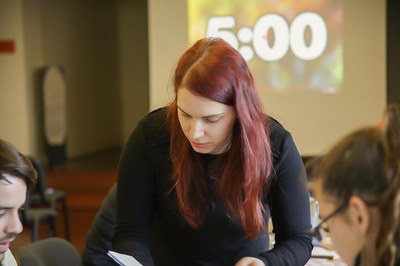
João's PhD involves the automatic segmentation of anatomic structures in volumes of Breast Magnetic Resonance Imaging (Breast MRI) and the 3D Registration with other radiologic modalities. Sílvia's PhD also addresses the 3D Registration of breast data, despite being about surface data (derived from 3D scanners) and radiologic volumes. The combination of the goals from both PhDs fosters the creation of complete 3D breast models, containing radiologic information from the internal breast derived from several modalities with surface data. On the other hand, these goals enable the creation of decision support tools, ranging from diagnosis, surgical planning to aesthetics assessment after the surgery.
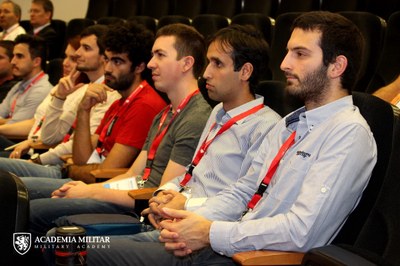
Despite being an extensive research area, one of the major obstacles to the application of automatic methodologies of computer vision and medical learning in medical imaging is the lack of population-representative data, corresponding annotation and the classification of structures of interest and the objective validation of the suggested strategies. It was within this context that we saw the possibility of learning statistical representations of the breast and to use machine learning techniques in order to generate new data. The idea is to generate physically plausible data that allows us to develop and to validate our algorithms more easily. This way, we would implicitly know which structures of interest (the equivalent to having annotations) and the correspondence between data of different modalities (we want to simulate Breast MRI and surface data). In contrast, if we verify the success of this project, we can create a set of data that would allow the direct and fair comparison of different algorithms, by using the same data to extract objective performance metrics. In addition, this set could be made publicly available and shared between centres without the need for approval by Ethics Committees or freedom infringements and data protection constraints that are very common in this area.
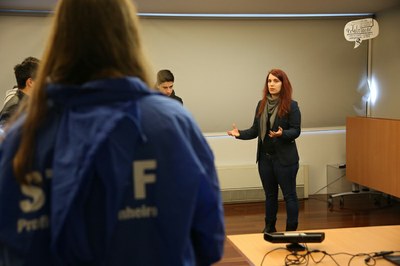
Another important issue in INESC TEC's daily life or of any other institution is to encourage collaborators to stay and attract more competent people. In this sense, the funding of this project is also an opportunity to attract capable and willing people, through another stimulation, other than the novelty and applicability of the topic.
We will end this interview by asking you to comment on your nomination by the CTM Coordination:
“The coordination of CTM would like to nominate the researchers João Teixeira and Sílvia Bessa for Limelight of January. João and Sílvia, both PhD grant holders of FCT, stood out for their excellent result obtained in the 1st edition of Seed Projects. The project they prepared and submitted is entitled "Learning Representations and Generative Models for 3D Breast Data", being an innovative project in the breast cancer area, having obtained the first place among the 30 submitted projects. This achieved benchmark reinforces the quality of them both as researchers who, besides the activities related to their doctoral studies, they also actively participate in the guidance of Master students and in funded projects: João in the BCCT.plan and Sílvia in BCCT.plan and S-MODE projects, to which this new challenge will be added".
[João] When I came to INESC TEC, I did it with the specific goal of learning more about the areas that I was interested in and that I felt that was a weakness in my Master’s education. At INESC TEC, I was soon attracted by the potential of cooperation among members of the same research group or by embracing the multidisciplinary of several groups. My PhD involved more an individual perspective, since my topic is about a medical imaging niche. However, as the group grew with new researchers and Master’s students, and the individual interests and experiences intersected, this opportunity [Seed Projects] became ideal to elaborate something useful and scientifically profitable, which could take advantage of the skills of each one. With this nomination, I know that the validity of our concept and our ability to bring this new responsibility to a successful conclusion were recognised. Besides that, I also see the possibility of continuing here due to the hospitality with which I was welcomed and I see the continued interest in maintaining INESC TEC as I perceived it three and a half years ago.
[Sílvia] When I decided to do my PhD, I had the idea that I would want to contribute for the group with not only scientific papers related to my work plan, but to also use that time to grow as a researcher. That included collaborating in projects, participating in scientific discussions with colleagues, starting in the guidance of students... Basically, understanding the necessary processes and dynamics to create science. That is why I proudly receive this nomination. The recognition of our work is an incentive and a reinforcement that our extra effort and dedication are appreciated, a sign that we are positively contributing for the area.


